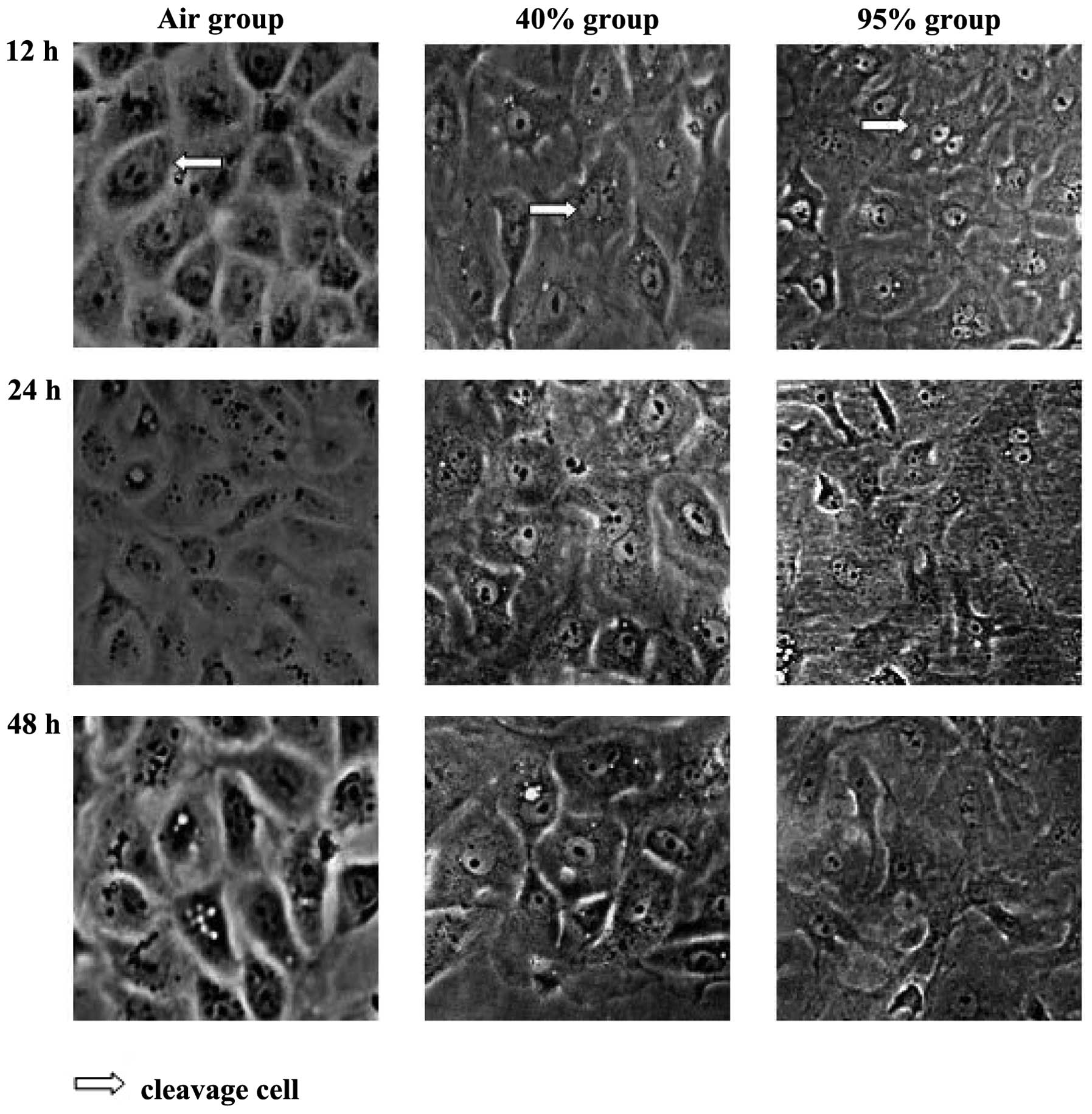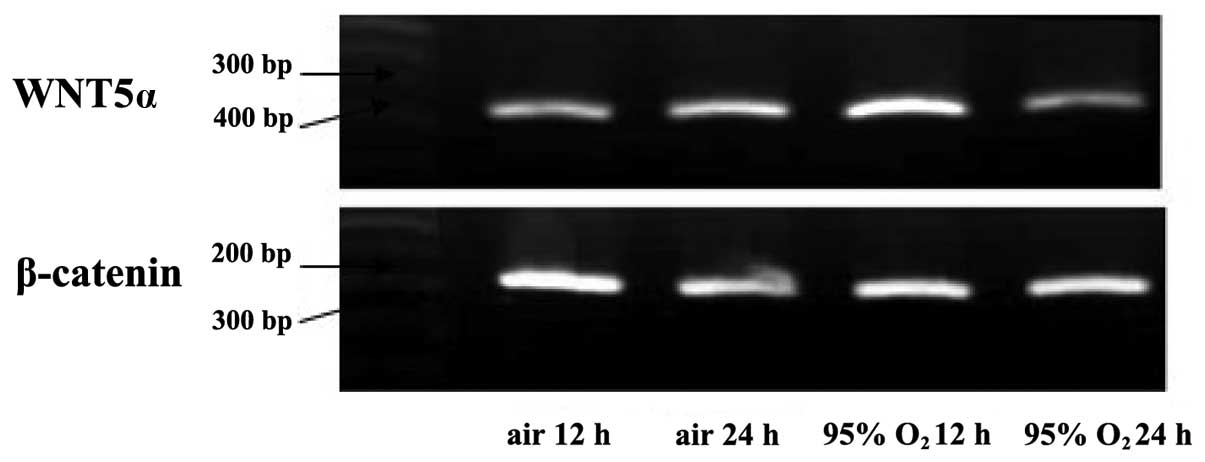Effects of different states of oxidative stress on fetal rat alveolar type II epithelial cells in vitro and ROS‑induced changes in Wnt signaling pathway expression
- Authors:
- Published online on: March 20, 2013 https://doi.org/10.3892/mmr.2013.1388
- Pages: 1528-1532
Metrics: Total
Views: 0 (Spandidos Publications: | PMC Statistics: )
Total PDF Downloads: 0 (Spandidos Publications: | PMC Statistics: )
Abstract
In the present study, we aimed to investigate the effects of different states of oxidative stress on fetal rat alveolar type II epithelial cells (AEC IIs) cultured in vitro as well as reactive oxygen species (ROS)-induced changes in the Wnt signaling pathway expression. Primary AEC II cultures were randomly divided into three oxidative damage groups: a high oxygen fraction (>0.95) group (95% O2), a low oxygen fraction (0.4) group (40% O2) and a room air group (21% O2). Each group was exposed to the different states of oxidative stress for 12, 24 and 48 h. Cell morphological changes were observed using an inverted microscope, the cell survival rate was determined by the MTT assay, and the apoptosis rate was determined using flow cytometry. Wnt5α gene expression was determined using reverse transcriptase‑polymerase chain reaction (RT-PCR) and changes in non-phosphorylated β-catenin protein in the cell nucleus were determined using western blot analysis. Compared with the room air group, the survival and apoptosis rates of the low oxygen fraction (0.4) group were not significantly different after 12 and 24 h, while significant differences were observed after 48 h of exposure. However, a significant difference was detected in the high oxygen fraction (>0.95) group at all three time-points. After 12 h, ROS concentration in the high oxygen fraction (>0.95) group was significantly higher compared with the room air group, and continued to rise after 24 h of exposure. Following 12 h of exposure, the expression of the Wnt signaling pathway in the high volume oxygen fraction (>0.95) group was significantly higher, whereas it decreased after 24 h of exposure. The groups exposed to room air showed no significant difference. In conclusion, with an increase in the time of exposure to oxidative stress, oxidative damage was evident after 48 h even with stimulation with low concentrations of oxygen (40%). The Wnt signaling pathway as an early regulatory factor is involved in hyperoxia lung injury, which is prematurely activated by ROS.












